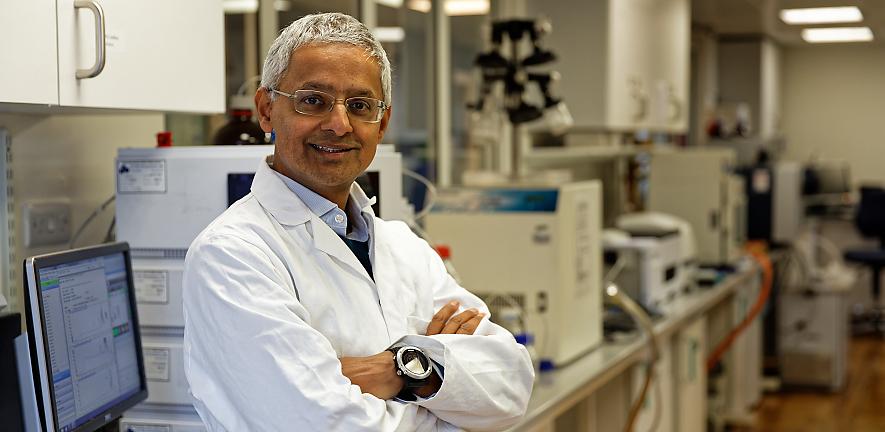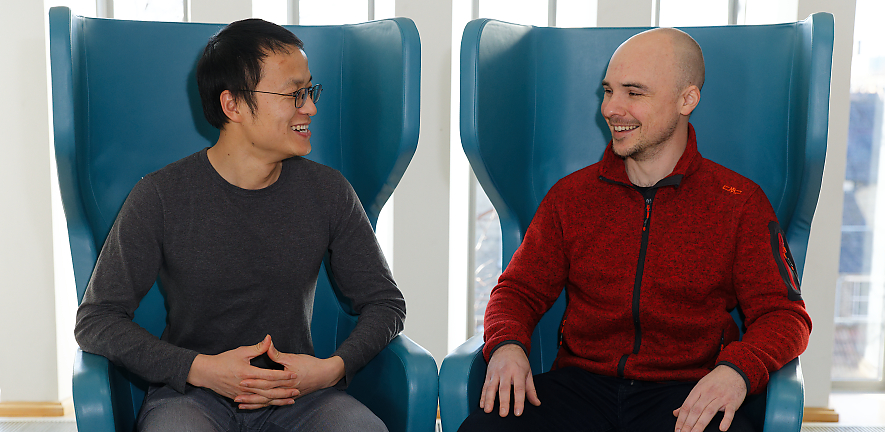
In a new paper published today in Nature Biotechnology, researchers in the Balasubramanian group describe a new DNA sequencing method which can detect where and how small molecule drugs interact with the targeted genome.
Black box
“Understanding how drugs work in the body is essential to creating better, more effective therapies. But when a therapeutic drug enters a cancer cell with a genome that has three billion bases, it’s like entering a black box,” said Dr Zutao Yu, a postdoctoral researcher in the Balasubramanian group and co-first author of the paper.
Lifting the veil
The powerful new method, called Chem-map, lifts the veil of this 'genomic black box' by enabling researchers to detect where small molecule drugs interact with their targets on the DNA genome.
Millions of cancer patients annually receive treatment with genome-targeting drugs, such as doxorubicin. But despite many decades of clinical use and much research, the molecular mode of action with the genome is perhaps surprisingly still not well understood.
“Lots of life-saving drugs directly interact with DNA to treat diseases such as cancer. Our new method can precisely map where drugs bind to the genome, which will help us to develop better drugs in the future,” said Dr Jochen Spiegel, co-first author and researcher in the Balasubramanian group.
Mapping small molecule-genome interactions
Chem-map allows researchers to conduct in situ mapping of small molecule-genome interactions with unprecedented precision, by utilising a strategy called small-molecule-directed transposase Tn5 tagmentation. This detects the binding site in the genome where a small molecule binds to genomic DNA or DNA-associated proteins.
In the study, the researchers used Chem-map to determine the direct binding sites in human leukaemia cells of the widely used anticancer drug doxorubicin, for the first time. The technique also showed how the combined therapy of using doxorubicin on cells already exposed to the HDAC inhibitor tucidinostat could have a potential clinical advantage.
The technique was also used for the first time to map the binding sites of certain molecules on DNA G-quadruplexes, known as G4s. G4s are four-stranded secondary structures that have been implicated in gene regulation, and could be possible targets for future anti-cancer treatments.
Yu said: “I am so proud that we have been able to solve this longstanding problem – we have established a highly efficient approach which will open many paths for new research.”
Professor Sir Shankar Balasubramanian, who led the research, said: “Chem-map is a powerful new method to detect the site in the genome where a small molecule binds to DNA or DNA-associated proteins. It provides enormous insights on how some drug therapies interact with the human genome, and makes it easier to develop more effective and safer drug therapies.”
Research
Z. Yu, J. Spiegel, L. Melidis, W. W. I. Hui, X. Zhang, A. Radzevičius & S. Balasubramanian, Chem-map profiles drug binding to chromatin in cells, Nature Biotechnology (2023).
Below: Co-first authors Dr Zutao Yu and Dr Jochen Spiegel


